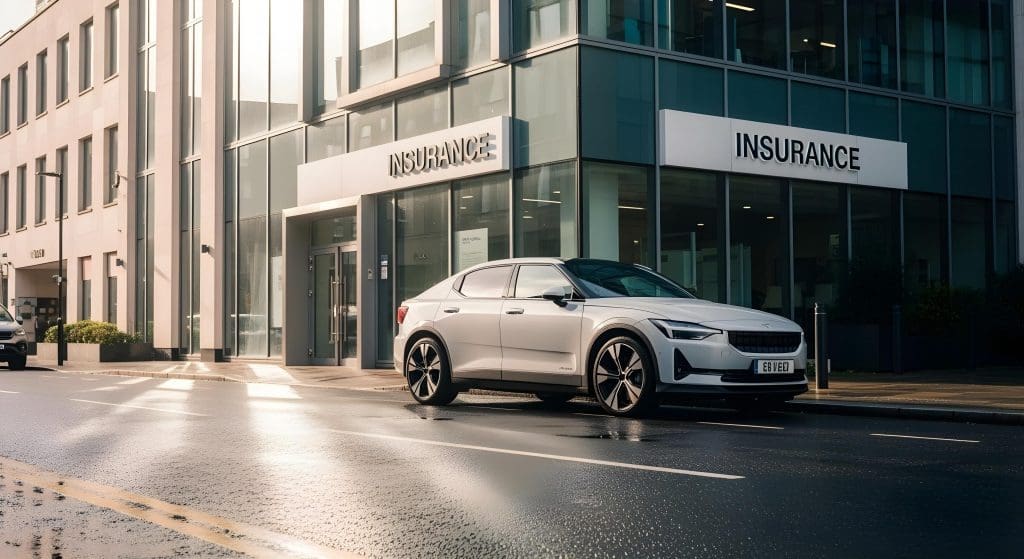You’ve done the maths on running costs, picked the perfect electric car, and are ready to join the EV revolution. But there’s one final question that still gives many drivers pause—how much will it cost to insure?
Headlines often claim EV insurance is pricier than petrol or diesel, but the reality in 2025 is far more nuanced. As the market matures and insurers adapt, smart drivers can often find premiums that are just as competitive—or even cheaper. Here’s how.
Why Can EV Insurance Be More Expensive? The Core Reasons
Insurers calculate premiums based on risk and cost. EVs present some unique considerations:
- Higher purchase price: EVs often cost more upfront, increasing potential payout values in total-loss claims.
- High-value batteries: The battery is the most expensive component; even minor casing damage can lead to major repair costs.
- Specialist repair requirements: Technicians need high-voltage training and specialist tools, increasing labour rates.
- Limited parts availability: The EV parts supply chain is still developing, sometimes extending repair times and costs.
Combined, these factors once led to higher quotes from cautious insurers. But things are changing fast.
The Good News: EV Premiums Are Becoming More Competitive
The more EVs hit the road, the smarter the data gets—and insurers are responding positively.
- More competition: Providers such as LV=, Aviva, and Admiral now offer dedicated EV cover with refined pricing models.
- Lower risk profiles: EV drivers tend to be cautious, data-driven, and supported by advanced safety features (ADAS).
- Mechanical simplicity: Fewer moving parts mean fewer mechanical faults, which can lower long-term claims.
The “EVs always cost more to insure” narrative is now outdated. The real trick lies in shopping smart and knowing what to look for.
7 Essential Tips for Getting Cheaper Electric Car Insurance
1. Shop Around with Specialist Insurers
Skip the generic comparison sites and go straight to EV-savvy insurers. Dedicated brokers and brands that highlight electric car expertise usually provide better-tailored policies.
2. Emphasise Safety Features
List every safety system your car has—Autonomous Emergency Braking (AEB), lane-keep assist, blind-spot monitoring, parking sensors. These features demonstrably reduce claims risk and can cut your premium.
3. Secure Your Vehicle and Charger
Parking off-road in a driveway or garage can lower premiums. Tell your insurer that you use a professionally installed home charge point—it’s viewed as a lower risk than using extension leads.
4. Consider a Telematics (‘Black Box’) Policy
If you’re confident in your driving, let the data prove it. Telematics can reward smooth, safe habits with discounts—particularly valuable for younger or low-mileage drivers.
5. Pay Annually if Possible
Paying in full avoids the interest charged on monthly payments and can instantly save 5–10% a year.
6. Increase Your Voluntary Excess
Opting for a higher excess reduces the insurer’s exposure, lowering your annual premium. Just ensure you could comfortably afford the excess in case of a claim.
7. Build and Protect Your No-Claims Discount
Transfer your No-Claims Discount (NCD) to your new EV policy and consider protecting it for a small fee—it pays for itself after a single claim-free year.
Key Policy Features to Look for in EV Insurance
EV ownership introduces some unique cover requirements. Check your policy for these essentials:
- Battery cover: Ensure the battery is protected for accidental damage, fire, and theft—ideally on a new-for-old basis for newer cars.
- Charging cable & accessory cover: Make sure charging cables, adapters, and wallboxes are covered for damage or theft.
- Public liability: Your policy should cover incidents like someone tripping over your charging cable at a public charger.
- Recovery to nearest charger: Some insurers now offer breakdown cover that includes towing to the nearest live charging point.
The Verdict
While EV insurance has unique factors, it’s no longer the financial hurdle it once seemed. The market in the UK & Ireland is maturing fast, and informed drivers are now in control.
By understanding how EV risk is assessed and shopping around with specialist providers, you can find a policy that complements the low running costs of electric motoring.
Next, discover what to do if you don’t have off-street parking—read “I Don’t Have a Driveway”: How to Own an EV in a Flat or Terraced House.
Frequently Asked Questions
- Is EV insurance more expensive than petrol or diesel?
- It can be slightly higher in some cases due to repair costs and specialist parts, but many insurers now offer competitive or lower EV rates.
- Does EV insurance cover the battery?
- Yes, most comprehensive policies cover accidental damage, fire, and theft. Always confirm battery cover before purchasing.
- Can I get breakdown cover for charging issues?
- Many modern breakdown policies include EV-specific recovery, towing you to the nearest charging point if you run flat.
- Does charging cable theft count as a claim?
- Usually yes—check your policy wording to ensure cables and portable chargers are included in theft or accessory cover.
- Can I insure a leased EV?
- Absolutely. Just ensure your insurer lists the finance company as the registered keeper and that your policy meets their requirements.
Save More, Drive Smarter
Insurance is just one piece of the EV puzzle. Plan your next trip, find the best public chargers, and earn loyalty rewards—all in one place with the ONEEV app. Join the smarter way to drive electric in 2025.
